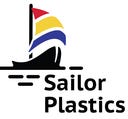Plastic Honey Bottles & Jar: The Packaging
If you are set to launch a premium sweetener like all-natural raw honey, it is important to invest a little more time in protecting your investment. If it takes seconds to form a first impression of a consumer walking through the aisle and searching for a reliable product, then it takes a fraction of that for the consumer to evaluate that product among the others displayed on the shelf.
When it’s a new product, most often consumers ‘judge a book by its cover’ or in the case of honey by the plastic bottles and containers it comes in. The material of the container plays a major role to keep these plant-based compounds in the best shape and form possible. As the product may not be able to deliver its core benefits and utilities if it is delivered in the wrong packing material.
Clearly, if the honey jars are for your friends and relatives luckily you have to think about fewer technicalities. However, when it comes to placing your product in the market you may experience unique challenges. With many industry standards, the chemical properties, and the compatibility of honey with the material, the options are practically endless.
To make your purchase easy, let’s dive into the packaging guide!
Container: The First Indicator of Quality
When it comes to shelved products like honey, beverages, and sprinkled water, consumers first do the aesthetic assessment and then hop onto the usability of the packaging be it plastic bottles or jars for honey. The foundation for effective packaging starts with storing honey in a clear PET oval-shaped bottle which is airtight and also wide-mouthed.
To get to the aesthetic assessment it is important to know who your consumers are so that you can easily capture your audience’s attention from the shelf in mere seconds.
Another thing is choosing the right plastic packaging so that the honey is stored in proper air-tight containers. This is extremely important because it helps to protect the water content which ultimately decreases the chances of fermentation. This can usually happen if you don’t use quality packaging. For best shelf stability, you can invest in PET bottles and jars to save your honey from chemicals that can leach into the products.
Plus, to catch shoppers attention again and again you need to win by noting the below factors as well:
- The final price of the product. Shipping glass is expensive leading to the higher freight costs. There might be a small difference if you are buying a small quantity but when ordering pallets in bulk it can impact the final cost.
- Sustainability and responsible packaging. PET bottles and containers work best as they take up less energy for production and can be used and reused by the consumers.
- Non-toxic, free from potentially harmful chemicals, and generally approved by FDA- PET packaging is highly resistant, lightweight, and shatterproof.
These drivers, in today’s world, speak volumes about what’s important to a customer’s purchase. So communicating them with the packaging and product has become ever so important. All you need to do is save the shoppers time by giving them easy-to-use and consume products with reliable packaging that can be reused in a number of ways.
How will it be used: Determining the shape and size of plastic honey bottles
Who does not want returning customers or capture the attention of first-time consumers among their competitors? When designing product packaging for an established industry like honey, it is worth considering if the packaging will fit which depends solely on the shape, size, and high-quality material.
From oval-shaped jars to boston round, new shapes of unique packaging are hitting the honey market for obvious reasons. With the shape and size, once your product is obviously designed and recognized as honey, it’s time to decide on the label to set yourself apart. Most of the reliable manufacturers today are following the trend of minimalist packaging which speaks for itself!
